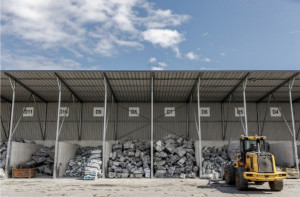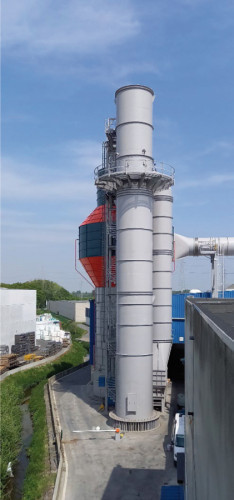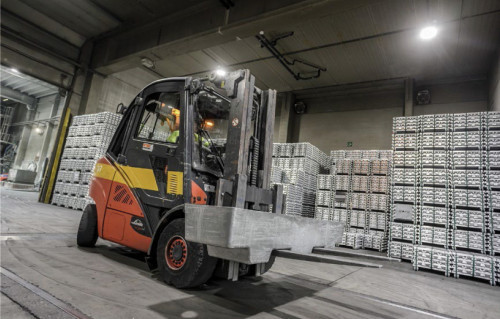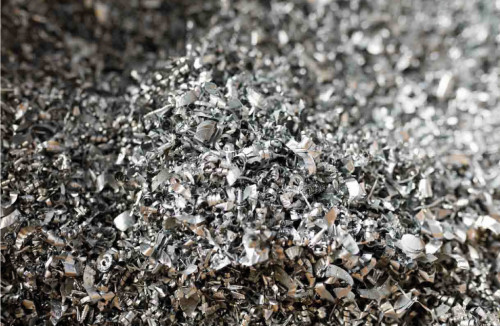The European Green Deal points the way to aCO2-neutral continent. One focus is the circular economy with priority on the long-term use of materials without special maintenance requirements and the reuse of products and materials.
The material zinc and its diverse applications provide the necessary properties to implement these requirements in an ideal way. Zinc has been recycled for decades, but there is still potential to close the loop even further. The company REAZN has formed as a recycling and upcycling expert and is pursuing the goals of the Green Deal to close the material cycle of zinc under clean conditions and to reduceCO2 in the material cycle.
"The proportion of primary zinc should be reduced!"
Various projects, such as DERA's recycling raw materials dialog platform or KartAL from the Federal Environment Agency (UBA), aim to determine the quantity of available raw materials according to their period of use and to identify the raw material paths. The aim is to reduce the proportion of primary raw materials such as zinc in products in favor of a smaller environmental footprint and, on the other hand, to keep raw materials that have already been extracted in the country as far as possible in order to secure raw materials or to reuse these materials in the interests of responsible and sustainable resource use. With regard to zinc, the study "Dynamic Global Zinc Stock & Flow Model" by the International Zinc Association (IZA), which was completed in 2021 and implemented by the Fraunhofer ISI Institute, shows the quantities of zinc that have been in circulation for decades in relation to their utilization paths and are available again after their utilization period. Due to the wide range of applications for zinc, the actual usage times for e.g. hot-dip galvanized steel, die-cast zinc components or roofing and façades were taken as a basis. Some applications, such as in cosmetics, pharmaceuticals, food supplements or fertilizer production, are dissipative in nature and are not available for direct recycling.
The IZA study shows the future recycling and upcycling potential of zinc. According to the study, the amount of zinc used for recycling has increased continuously in recent years. The study shows that in many applications, the end-of-life (EOL) has by no means been reached - roofing that was installed in 1970, for example, is still fulfilling its purpose today and will only be available for sorting and recycling in a few years' time (Fig. 1).
In addition to the availability of EOL scrap, the reduction of the environmental footprint or greenhouse gas potential has a significant influence on the sustainability rating. In addition to the development of innovative recycling technologies, processes need to be optimized. The circular economy model of the company REAZN can be cited as a practical example. Among other things, it supplies the galvanizing industry with a wide range of die casting alloys. In order to live up to its ambitious "Net-Zero" ambitions, the group of companies is continuously investing. By continuously improving the smelting processes and investing in plant and environmental technology to reduce energy consumption and emissions at the sites, zinc alloys are produced with a very lowcarbon footprint (Fig. 2 and 3).
Particular attention must be paid to quality when using recycled raw materials. Old scrap from its first use is available in a wide variety of alloys and qualities. The processing for the reuse of zinc recycling raw materials is implemented in the company by means of assured quality management in accordance with the ISO 9001:2015, ISO 14001:2015 and ISO 45001:2018 standards as well as EcoVadis membership (Platinum). Zinc alloys made from recycled raw materials are subjected to strict quality controls at REAZN in order to produce high-quality zinc alloys for long-term reuse (Fig. 4).
Zinc: 100% recyclable
 Fig. 5: Resource separation in the raw materials warehouseZincis a valuable material that is ideal for recovery and is already used in large quantities as a secondary material in the production of durable products. The recycling and upcycling of zinc and the associated sustainability are integral parts of the use of zinc, as the practical example of REAZN shows. This makes it possible to respond to the growing demand for sustainable products, while the global demand for a circular economy is also supported by the growing market for recycled raw materials. The circular economy and the use of secondary raw materials means generating and conserving valuable resources and obtaining the best possible added value from secondary raw materials (Fig. 5).
Fig. 5: Resource separation in the raw materials warehouseZincis a valuable material that is ideal for recovery and is already used in large quantities as a secondary material in the production of durable products. The recycling and upcycling of zinc and the associated sustainability are integral parts of the use of zinc, as the practical example of REAZN shows. This makes it possible to respond to the growing demand for sustainable products, while the global demand for a circular economy is also supported by the growing market for recycled raw materials. The circular economy and the use of secondary raw materials means generating and conserving valuable resources and obtaining the best possible added value from secondary raw materials (Fig. 5).
Minimizing the environmental impact on our planet
There is currently a lot of talk about the European Green Deal and sustainability. However, for a concrete implementation of the requirements and the company's own orientation, it is necessary to review the impact of measures in order to identify and implement further potential for improvement. In a joint project to map the environmental footprint of zinc die-casting, the companies REAZN and the Adolf Föhl zinc die-casting foundry have mapped their joint supply chain as a digital twin of the production processes for zinc die-cast products. The result summarized: The use of 100% secondary raw materials for the production of zinc alloys reduces theCO2 footprint by up to 97.5%. The percentage ofCO2 savings depends on a variety of factors and REAZN does not always achieve the optimum of 97.5% at present.
Photos: Initiative Zink
INFO
REAZN Group and Initiative Zink
The REAZN Group is the recycling expert for high-quality customized zinc alloys. The company employs 130 people and produces 103,000 tons of zinc alloys annually for around 400 customers worldwide.
Initiative Zink stands for the network of the German zinc industry, is the point of contact for everything to do with zinc as a material and maintains continuous contact with partners in trade associations, research institutes, NGOs, expert committees, developers and users.





